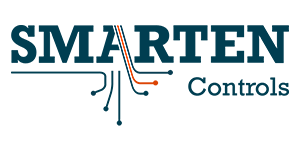

These programs give the rod designer a great deal of control and versatility in simulating various downhole conditions-allowing for the prediction of mechanical stresses on each rod taper and the expected producing performance of the pumping system. The Wave Equation is also employed in Predictive Rod Design Programs, with the best known programs being RODSTAR (by Theta) & SRod (by Lufkin). However, interpretation can still be difficult at times due to the simultaneous occurrence of multiples factors affecting the shape of the Pump Card.

By filtering out the effects of the rod-string and everything else occurring above the pump's plunger, the Wave Equation essentially standardizes the various shapes the Pump Card can take and greatly improves the ability of the pump performance to be properly diagnosed. The beauty of the Wave Equation is that it allows surface data to be acquired (which is easily accessible and inexpensive) and then mathematically filters the data to illustrate the downhole pump performance each stroke.

This plot is known as the downhole Pump Card. The Wave Equation models the elastic behavior of the rod string in its dynamic motion-which allows the surface measurements acquired from the polished rod to be “waved” downhole to the pump to generate a plot of the Load vs Position on the pump's plunger. Sam Gibbs provided a solution to this problem when he developed the Wave Equation. Thankfully, a very intelligent man by the name of Dr.

After all, the only reason for having any of the surface or downhole equipment is to effectively actuate the downhole pump so new fluid will be drawn into the tubing and lifted to surface. For example, compare the shapes of the "flying duck" Surface Card (from an all steel string) at the top of the page with the Surface Card shown in the top left corner of the sheet above (50% Fiberglass rod string).Īlthough there is some value to be gather from the Surface Card, oil operators are much more interested to know what is happening downhole at the pump. With the Surface Card being affected by so many different factors, there is no "standardized" shape to Surface Cards-which greatly increases the difficulty of interpreting what is happening downhole. The load on the polished rod is a summation of every load occurring downhole and is thus a function of: the fluid load on the pump, the rod-string design and the buoyant rod weight, the acceleration forces (which are a function of the SPM x SL, pumping unit geometry and the direction of rotation), the mechanical friction of the rods-on-tubing (and the rods on paraffin, etc), and the viscous frictional forces generated between the rods and fluid. The plot of the polished rod Load vs Position is known as the Surface Card. A Dynamometer is a diagnostic device used on Sucker Rod Pumped Wells that measures the load on the top rod (Polished Rod) and plots this load in relation to the polished rod position as the pumping unit moves through each stroke cycle.


 0 kommentar(er)
0 kommentar(er)
